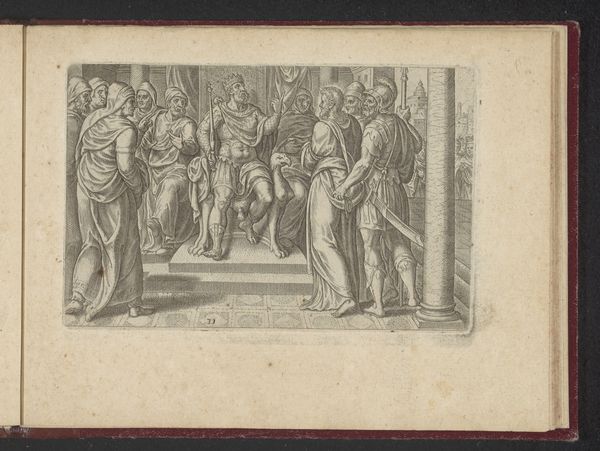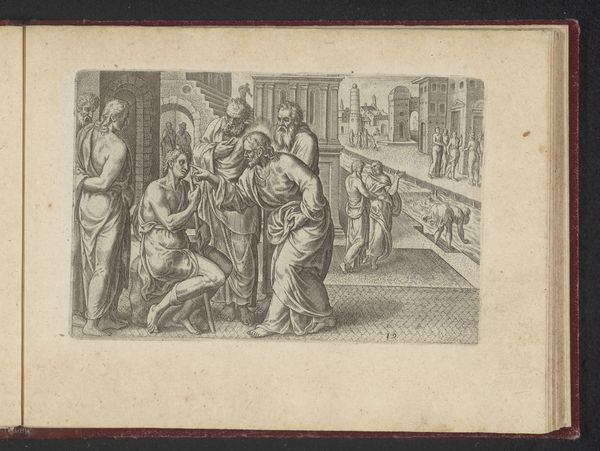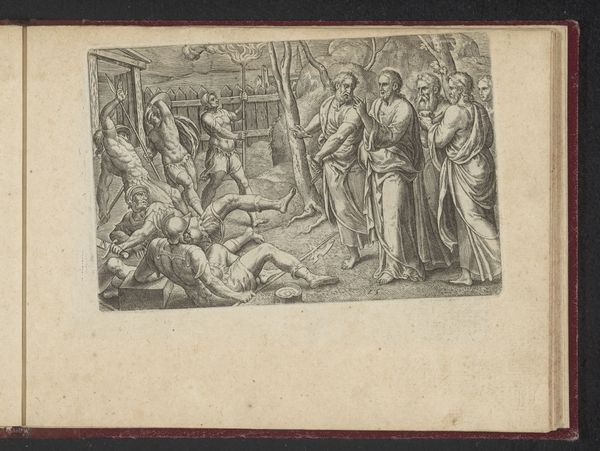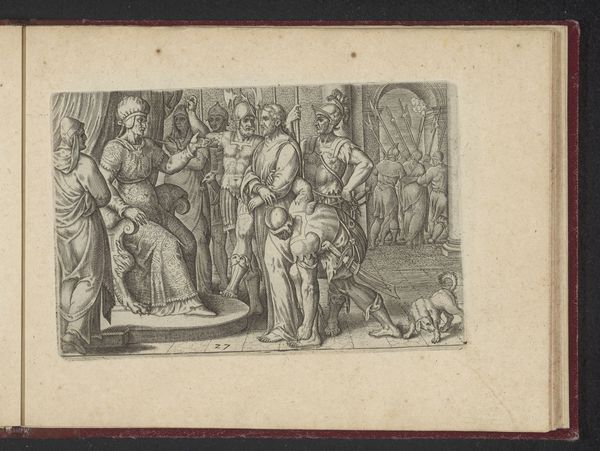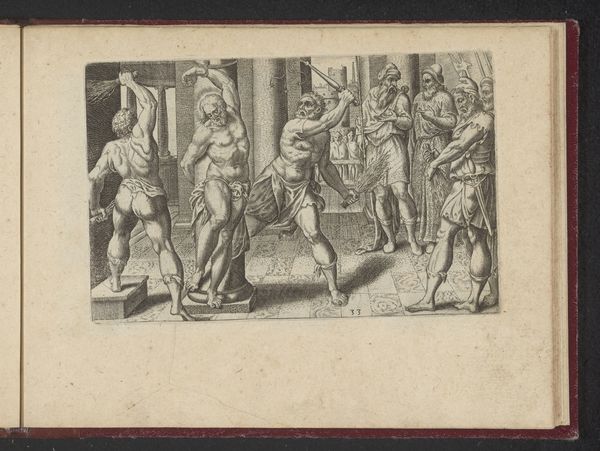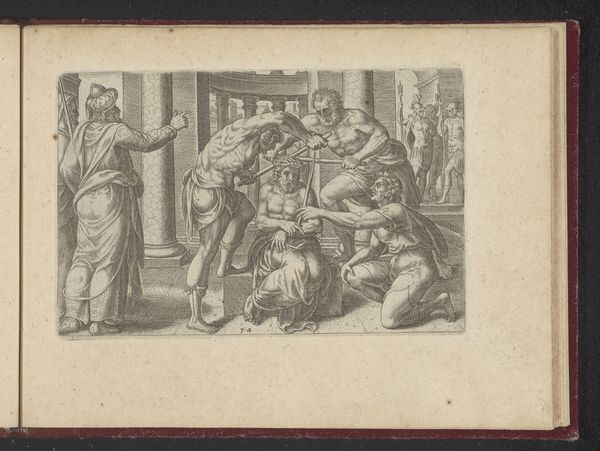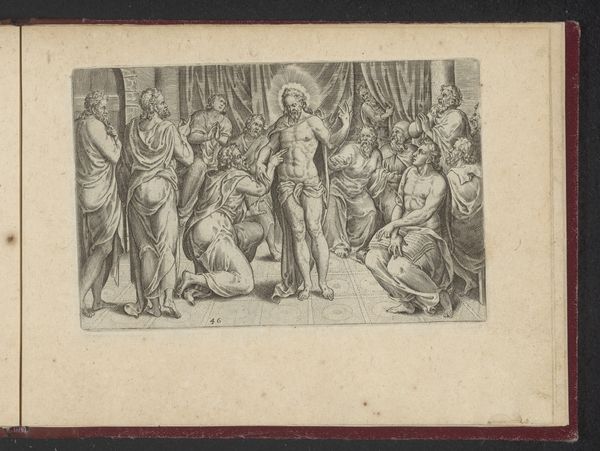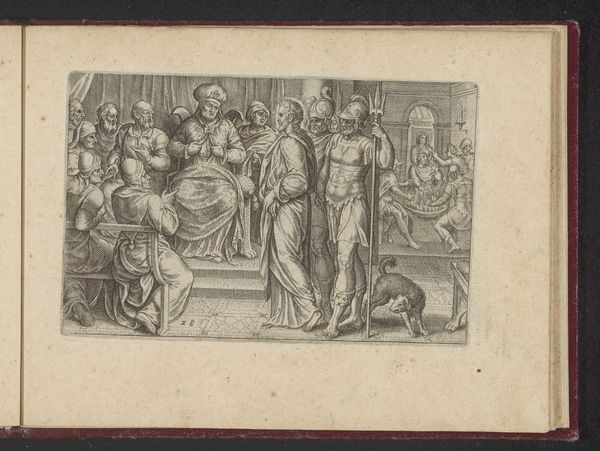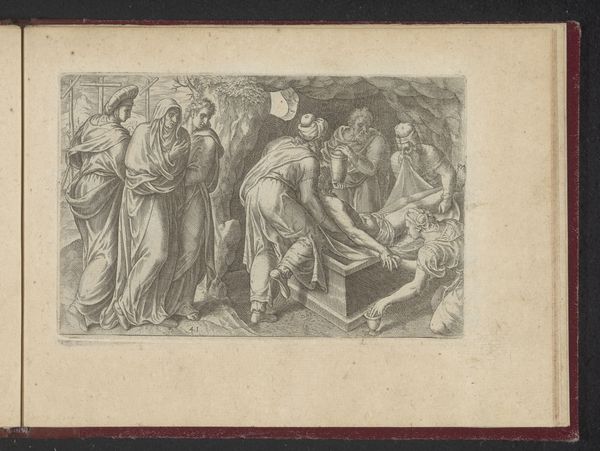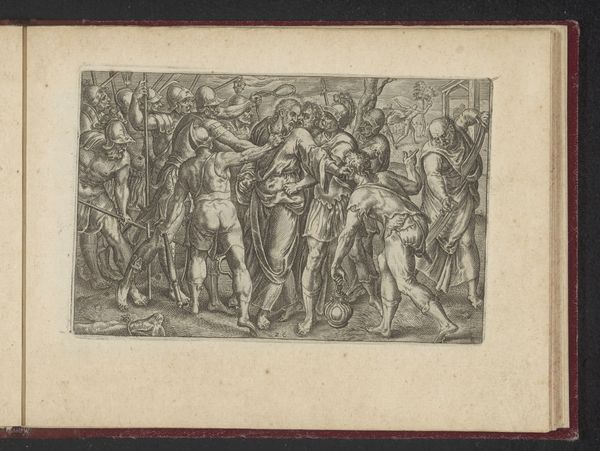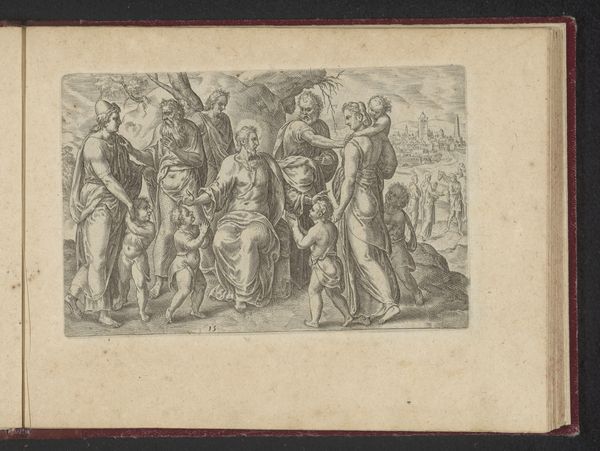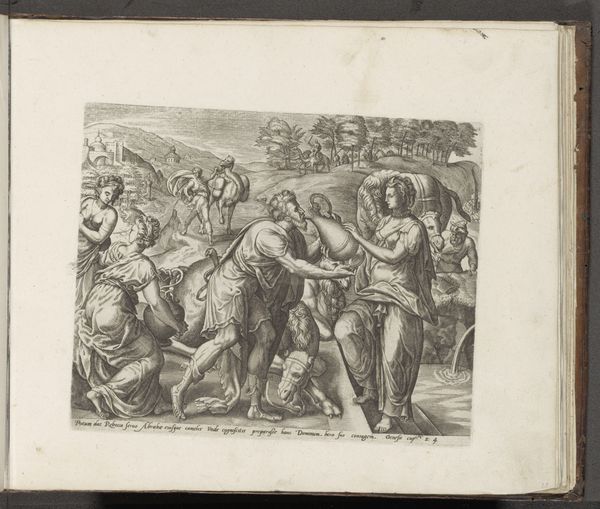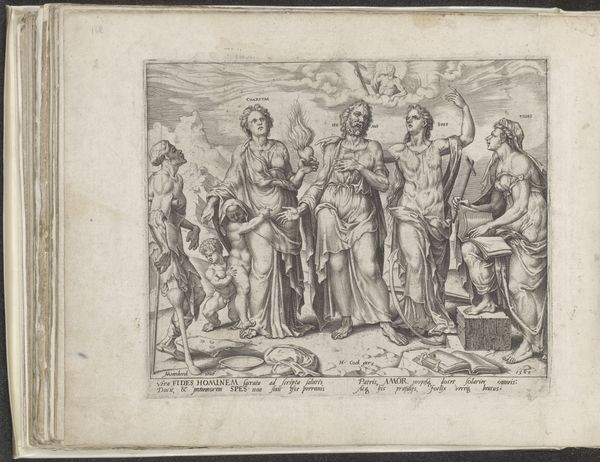
print, engraving
# print
#
figuration
#
11_renaissance
#
coloured pencil
#
line
#
history-painting
#
northern-renaissance
#
engraving
Dimensions: height 92 mm, width 139 mm, height 137 mm, width 183 mm
Copyright: Rijks Museum: Open Domain
Philips Galle created this print, ‘Pilatus wast zijn handen,’ sometime between 1550 and 1600. The image depicts the biblical story of Pontius Pilate washing his hands as a symbolic gesture to disclaim responsibility for the fate of Jesus. Galle was deeply embedded in the religious and political upheavals of his time. Living in the Netherlands during the Reformation and the Eighty Years' War, his work often reflected the tense dynamics between religious conviction, political power, and personal conscience. Galle navigates these complexities in this print. Pilate, the Roman governor, is shown in a position of authority, yet he chooses to publicly absolve himself. What does it mean to publicly declare one's innocence while participating in an act of injustice? This piece invites us to reflect on how those in positions of power often navigate moral ambiguities, especially during times of conflict. It also asks us to consider the personal cost of choosing neutrality in the face of injustice.
Comments
No comments
Be the first to comment and join the conversation on the ultimate creative platform.
